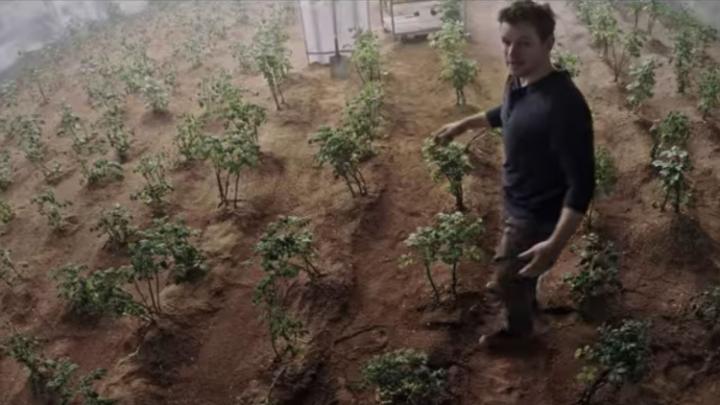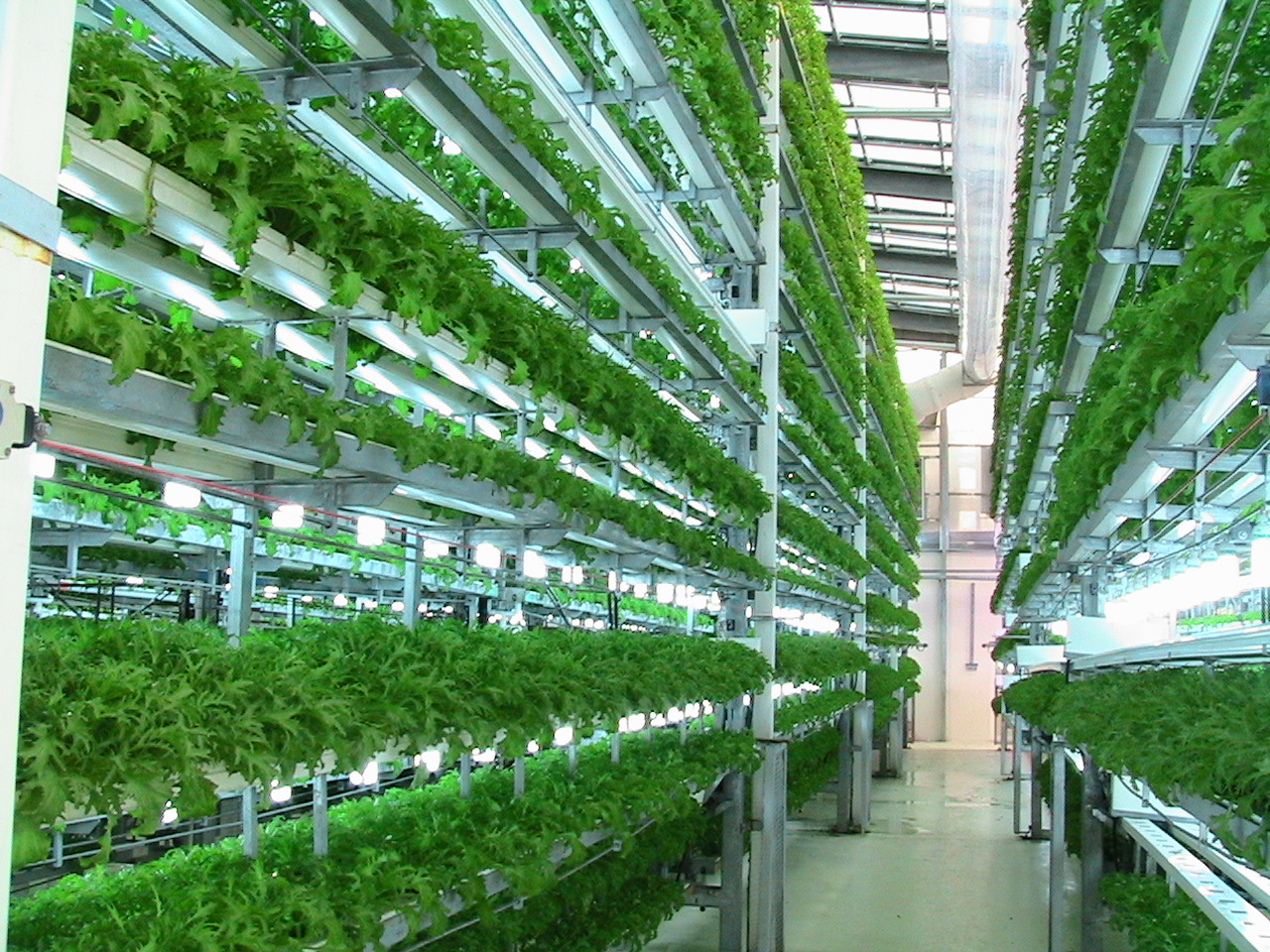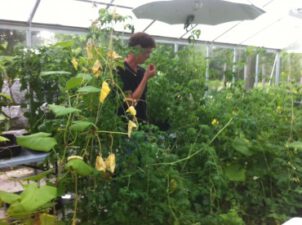 Look to Techcrunch any day of the week and see how investment opportunities abound in Agtech. Then go see Matt Damon in The Martian to get a sense for the future of your food.
Look to Techcrunch any day of the week and see how investment opportunities abound in Agtech. Then go see Matt Damon in The Martian to get a sense for the future of your food.
Combine trillion dollar opportunities with a market sprouting in the United States. It’s called “distributed agriculture” on Wall Street, or Controlled Environment Agriculture (CEA) by many of those in the business.
In simple terms distributed agriculture or CEA is about taking away our reliance on the land or weather by growing food in indoor or controlled greenhouses that optimize productivity, and minimize precious resources like water.
Related: flux gadget blooms your hydroponic garden
In some cases distributed agriculture is 90% more water efficient than soil based farming –– currently an exploitive endeavor even given progress in areas like precision agriculture. And of course, because it’s indoors you can grow any time of the year in any climate –– even during an Alaskan winter.
The practice of distributed agriculture, it is endeavored, could make the US food secure. The country is currently a net importer of its food and this worries some people in the US Department of Defense. Climate change, countries in conflict, and acts of terror could all upend the American way when food gets involved.
Distributed agriculture promises another way
Consider that growing food next to large urban centers where it’s eaten, using technologies like hydroponics, means more sustainable food, fresher food, and local jobs.
Growing America’s food locally using distributed agriculture is essentially a trillion-dollar opportunity, according to Nicholas Heymann of Wall Street’s William Blair & Company, a wealth management firm.
He says: “It will take a $1.75 trillion investment to enable the US to become largely self-sufficient for its fresh vegetable and fruit requirements, which would expand high-paying jobs and related support sectors throughout the country.”
 Growing food indoors does seem like the sort of stuff for science fiction and Martians but Sue Raftery, founder of AGROWN, a company setting the stage to grow the industry in both private and public sectors, sees huge opportunities in locally grown food.
Growing food indoors does seem like the sort of stuff for science fiction and Martians but Sue Raftery, founder of AGROWN, a company setting the stage to grow the industry in both private and public sectors, sees huge opportunities in locally grown food.
Her company AGROWN, of which she is the CEO, is positioning itself to be the zip code where new hydroponics technologies and breakthroughs start. How? The company is currently building out the first North American indoor agriculture research park in the quaint town of Brattleboro, Vermont, and is negotiating contracts to build food parks all over the United States.
October 21 to 23 she’s opening up her Rolodex and is hosting an investor summit in Ohio so investors can learn more about these opportunities.
There are currently only 7 large-scale commercial scale indoor agriculture growers in the United States, she says, and they are using technologies that rely on hydroponics. This is technology that grows food fast and efficiently on water with added nutrients.
AGROWN’s Agtech Investing Conference (link here) will be held at the Ohio Agriculture Research and Development Center in Wooster and it is limited to 35 investors.
Among her partners are NASA: According to Raftery, AGROWN has created a knowledge-filled two-day that would otherwise “take weeks or even months to learn on your own.”
Presenters include Priva, BV’s CEO Meiny Prins, Director of CEA at University of Arizona Dr. Gene Giacomelli, NASA scientist Dr. Jay Famiglietti, and USMC Ret Col. Mark Mykleby, who co-authored the Grand Strategy for United States Sustainability for the Joint Chiefs of Staff, where it was recognized that food security is national security.

Why America, and why only now?
“The US is one of the largest markets where CEA has yet to be widespread. Having relied so long on bountiful land and water, we did not need to consider it,” says Raftery.
But times have changed.
US Food Security as National Security
According to the Department of Defense in a sustainability report from the Joint Chiefs of Staff in 2013 in speaking to creating sustainability in the US, “we needed to look closely to food security,” says Raftery, a PhD Agriculture Economics and Rural Sociology from The Ohio State University.
“This report stressed that to create national sustainability it is important to consider food security. The food system with long food chains, much of which enters the country without close inspection, leaves consumers vulnerable to food that could be tainted along the way,” she tells Green Prophet.
“Likewise the ability to disrupt our long fresh food supply chains is an easy target by outside interest groups (like terrorists) and extreme climate events such as hurricanes, tornados, etc., which could result in lack of availability of fresh fruit and vegetables which is already limited to a 3 to 5 days supply at best for most of the nation.
“Fuel scarcity, water scarcity (like the California drought) all show the vulnerabilities that could be off-set by creating a nationally distributed agricultural network with shorter supply chains, less waste, and more nutritious foods available for the consumer clamoring for more local/regionally grown food,” says Raftery.
“It should be noted that even during the recent 2008 economic downturn that CEA growers found consistent, stable consumer base who appreciated the high-quality CEA grown product.”
How many indoor greenhouses could feed America? William Blair & Co predicts 4,400 40-acre CEA greenhouses to provide food security.
Technologies critical for these businesses to succeed? Access to fiber optic networks, integrated systems control such as water, fertilizer, humidity, CO2, and “monitoring that emulates the Dutch way,” says Raftery: “They use only what has been proven successful to grow inside the greenhouses.”
In parallel, Raftery is rolling out the AGROWN tech transfer center, The CEA Research & Training Center in Brattleboro, Vermont to provide access for industry trials for new and innovative technologies for the North American market. A first for the US, the Vermont center will roughly house 10 acres of food under glass.
“This center will focus on industry based applied research and skills based training — both of which are needed if we are to support the predicted growth for the industry in the US, as well as tech transfer as appropriate for the global markets,” says Raftery.
There are approximately 75,000 acres of commercial scale CEA globally at this time.
Sound interesting? Costcos and Walmarts of the world should be in Wooster, Ohio next week. As well as private equity investors interested in agtech, clean tech and renewable energy.
Register here to attend the AGROWN event





